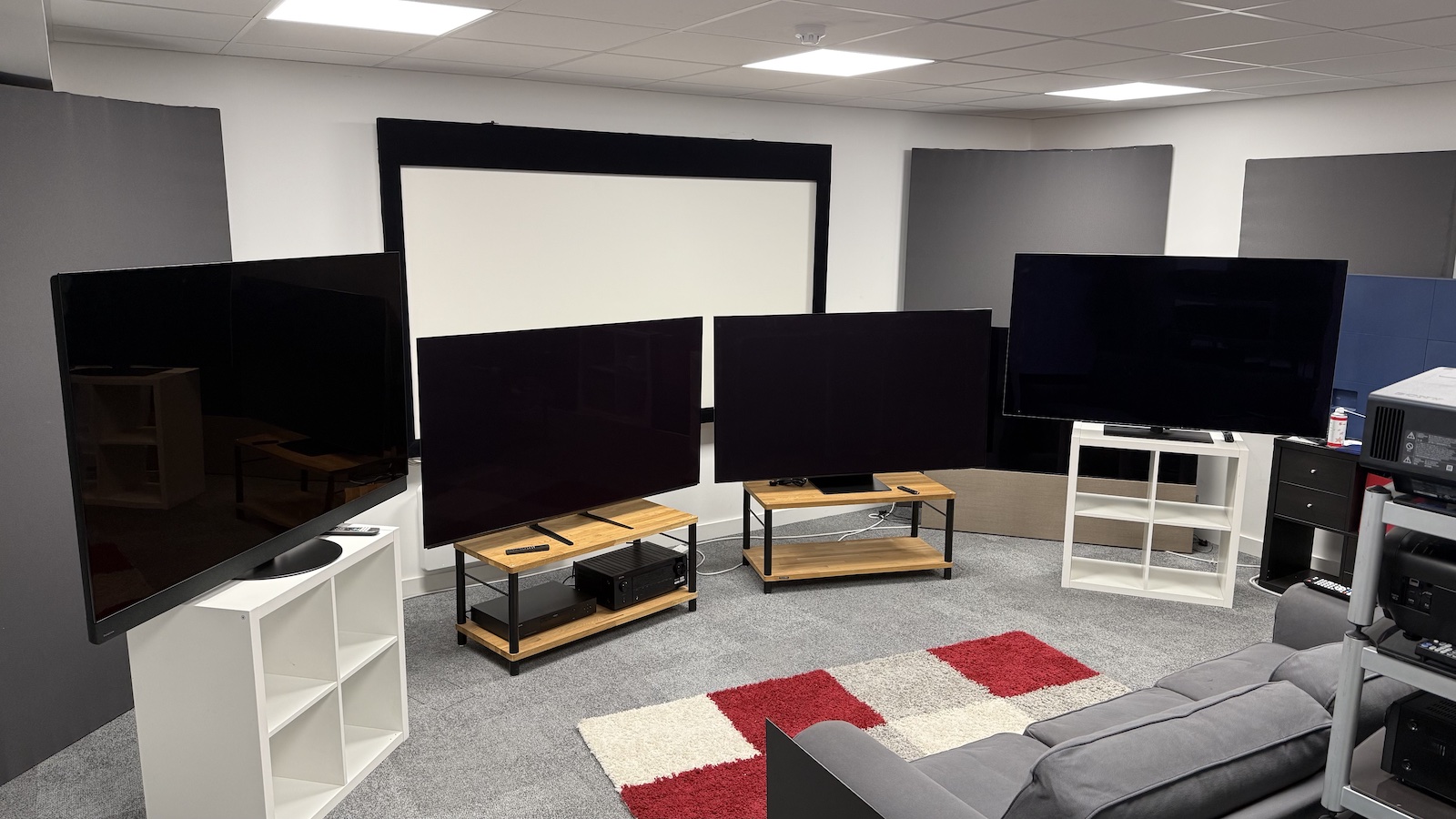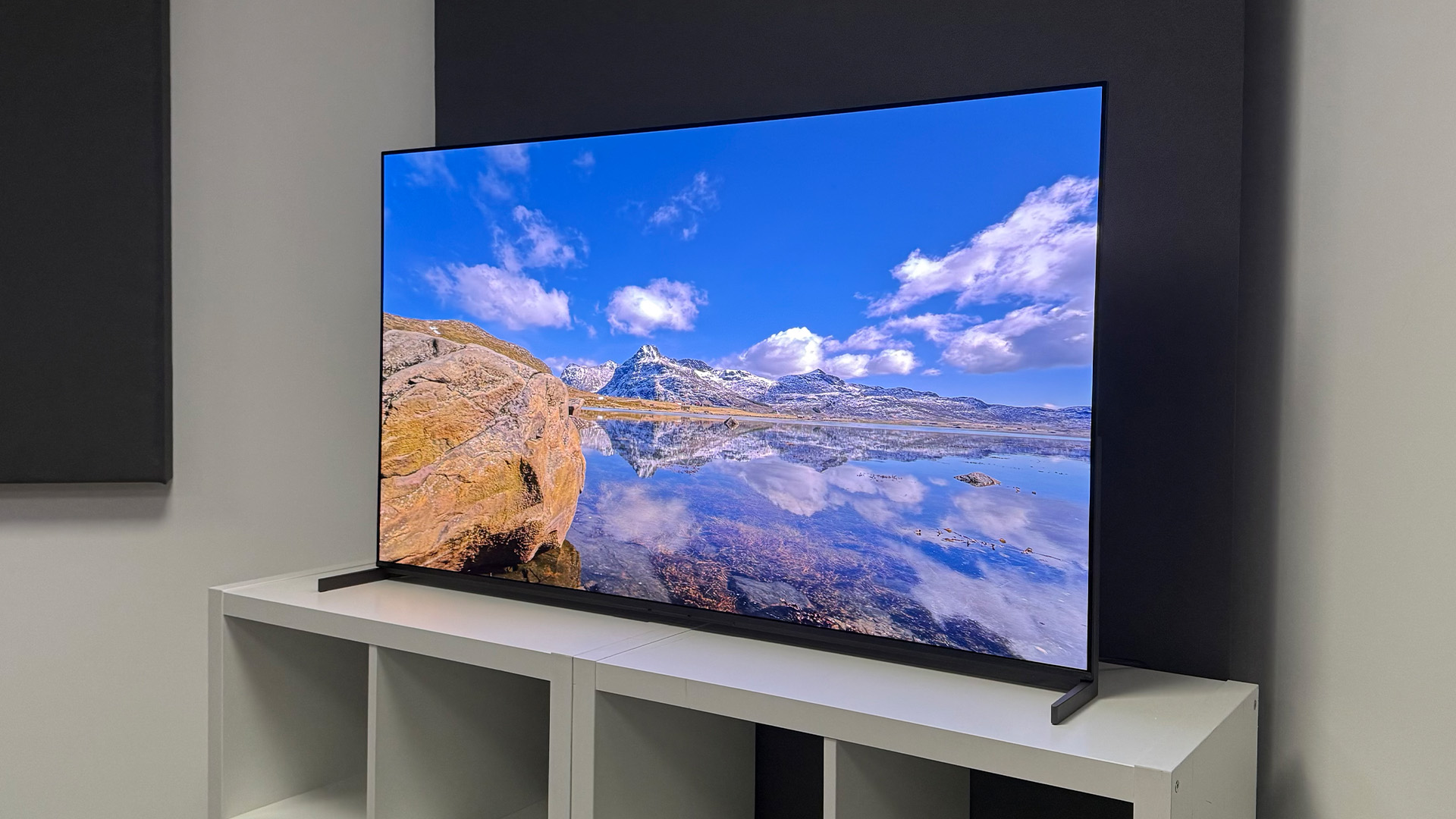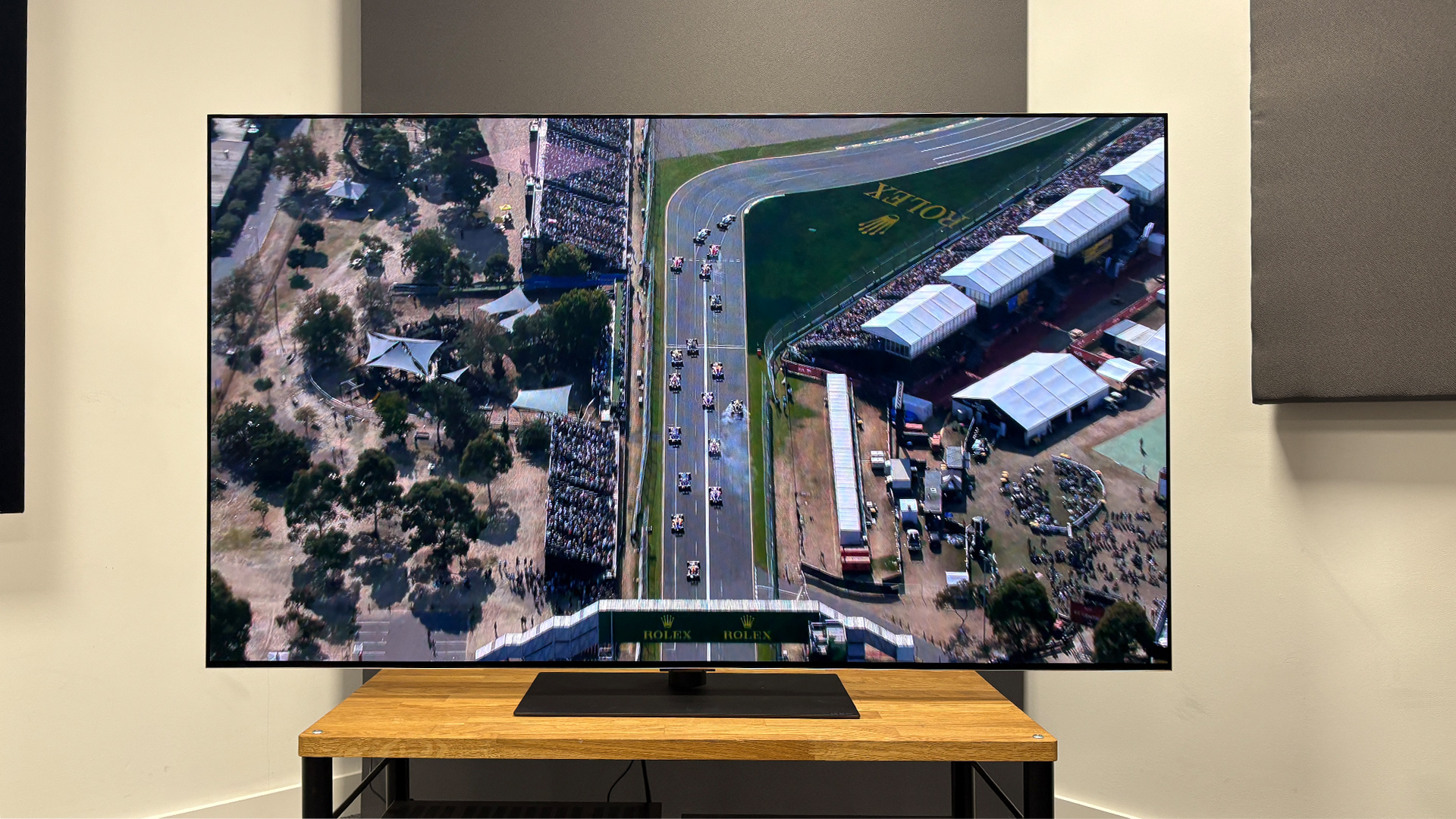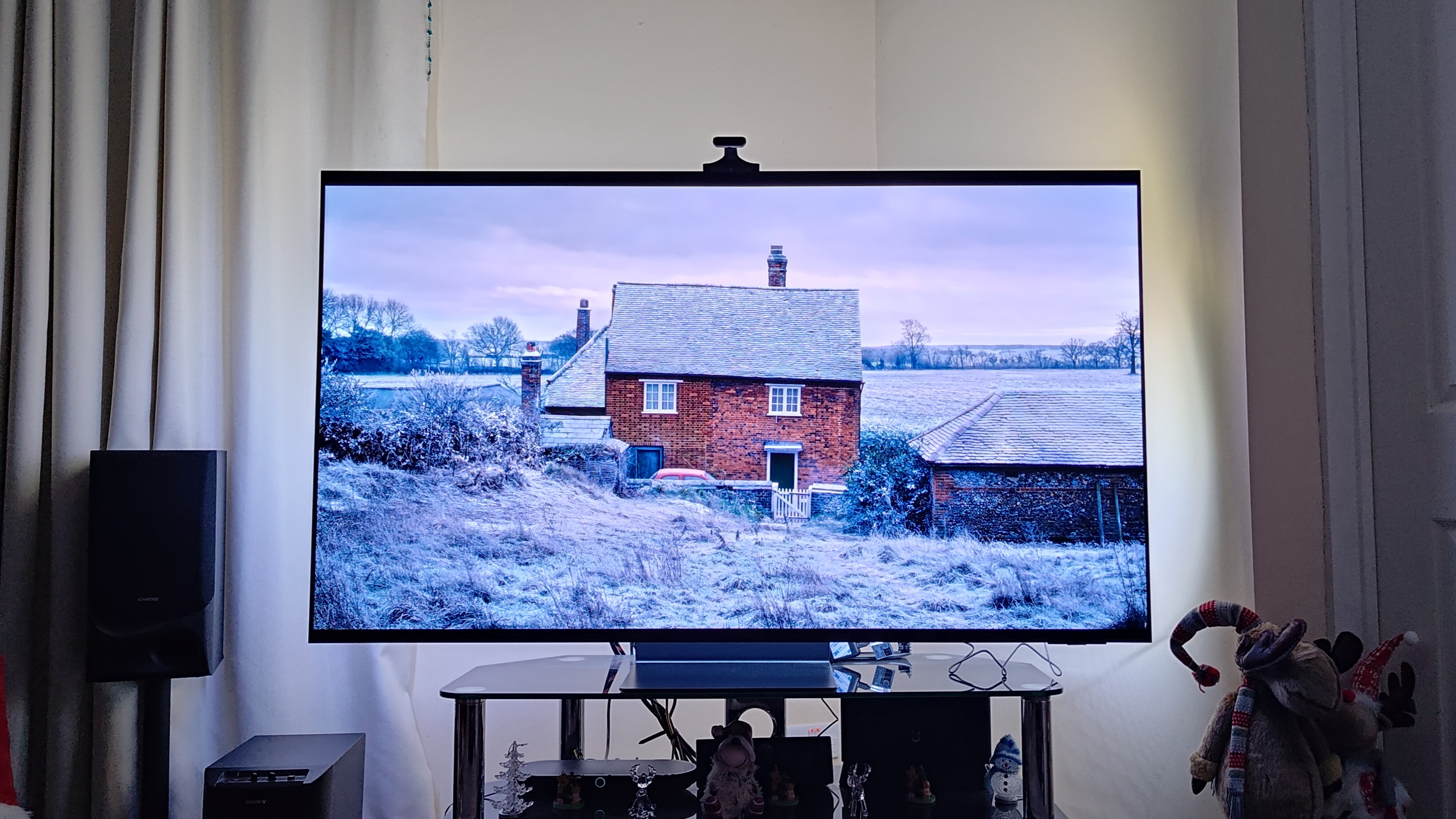Lots of our readers contacted me to ask why I prefer the Sony Bravia 8 II to the LG G5 – this is what I told them
Two great TVs, but I have a definite favourite

In all my years of testing TVs (18 and counting), no single model has prompted as much correspondence from our readers as the Sony Bravia 8 II.
In fairness, that's probably got a lot to do with how much I keep banging on about how good Sony's latest QD-OLED model is.
But I think it's also because accepted wisdom tends to be that someone looking for a flagship-grade OLED TV should buy LG's latest G-series model.
And that is indeed what has formed the basis of the majority of emails I've received on the subject. To paraphrase, what most readers are asking me is, "Is the Sony Bravia 8 II really better than the LG G5?"
In my personal opinion, it is. And, having recently done some additional side-by-side testing of the two TVs (as well as two others, as you can see from the photo above) with my esteemed colleagues Alastair Stevenson and Lewis Empson, I can now confirm that's also the consensus of the What Hi-Fi? TV/AV team in general.
The LG G5 is a superb, five-star TV (now that its initial Dolby Vision posterisation issues have been fixed), and there are some ways in which it's better than the Sony Bravia 8 II.
It's capable of producing even brighter highlights, for one, thanks to its cutting-edge Primary RGB Tandem OLED panel.
The latest hi-fi, home cinema and tech news, reviews, buying advice and deals, direct to your inbox.
It's a better TV for gamers, too, primarily thanks to its array of four HDMI 2.1 sockets.
This means there's none of the connection congestion that those with multiple gaming machines and possibly a Dolby Atmos sound system might have to contend with if they buy the Bravia 8 II, which has just two HDMI 2.1 inputs.
There's also a greater seamlessness to the G5's operating system, which is bespoke to LG's TVs.
Yes, there are more adverts than there should be on a TV costing thousands of pounds/dollars (many would argue there should be no adverts at all, and I'm inclined to agree), but there's a consistency to all of the pages and menus that the Sony lacks on account of its melding of Sony's own menus with the Google TV platform.
I expect the G5's design will appeal more to those going down the wall-mount route, too. The picture frame-style design really does look fab held flush against a wall by the bundled mount.
The Bravia 8 II advantages

But the Bravia 8 II is the better TV where it really counts – picture quality.
Yes, the G5 is capable of going outright brighter, but the Bravia 8 II is superbly bright in its own right, and it combines that brightness with a colour vibrancy and consistency that the G5 can't quite match.
The Bravia 8 II is better in the darkest parts of the picture, too
Sony has put a huge amount of effort into dark gradation, and it's really paid off: the Bravia 8 II can produce the perfect, inky blacks for which OLED is renowned, but it also digs up more shadow detail than other models, particularly the G5, which slightly crushes near-black picture elements.
Where the Bravia 8 II really stretches its lead, though, is in the sharpness, solidity and perceived depth of its image.
This is in part down to the strengths mentioned above, but also some exemplary processing that subtly sharpens some picture elements to make them appear more three-dimensional, all while adding nothing in the way of artificiality.
Watching the two TVs side-by-side, using a variety of our favourite test scenes, we all found the Bravia 8 II more appealing than the G5 overall.
The G5 is excellent, and its extra brightness can be dazzling, but the Bravia 8 II achieves a near-perfect combination of punch, vibrancy, crispness, consistency, authenticity and naturalism.
It also takes very little effort to get it looking that great, thanks to some excellently tuned presets: for ultimate accuracy, simply pick Dolby Vision Dark for Dolby Vision content and Professional for everything else.
If you want a bit more pop, either for daytime viewing or just for fun, switch to Dolby Vision Bright or the Cinema mode.
So, not only is the Bravia 8 II capable of being great, it can be great for everyone. The LG G5's presets are very good, but certainly not as good.
Then there's audio quality.
To me, that matters less, because any TV of this calibre (heck, any TV) really has to be partnered by a dedicated sound system, but if you're determined to use your TV's own speakers, there's just no contest: the Sony Bravia 8 II is one of the best-sounding TVs available, and the G5... isn't.
Don't forget that the G5 is still great

As I've said several times already, the LG G5 is still a great TV, and it will better suit some people than the Bravia 8 II will (the Sony only comes in 55- and 65-inch sizes, for starters), but for me and my colleagues, there's a fairly clear winner between these two new flagship OLEDs.
Does that make the Bravia 8 II the best premium TV you can buy right now? The Samsung S95F, which we're reviewing right now, might have something to say about that, but Sony has certainly set a very high bar for it.
MORE:
Read the full Sony Bravia 8 II review
Here's our complete Sony Bravia 8 II vs LG G5 comparison
These are the best TVs and best OLED TVs you can buy right now
Tom Parsons has been writing about TV, AV and hi-fi products (not to mention plenty of other 'gadgets' and even cars) for over 15 years. He began his career as What Hi-Fi?'s Staff Writer and is now the TV and AV Editor. In between, he worked as Reviews Editor and then Deputy Editor at Stuff, and over the years has had his work featured in publications such as T3, The Telegraph and Louder. He's also appeared on BBC News, BBC World Service, BBC Radio 4 and Sky Swipe. In his spare time Tom is a runner and gamer.
You must confirm your public display name before commenting
Please logout and then login again, you will then be prompted to enter your display name.

